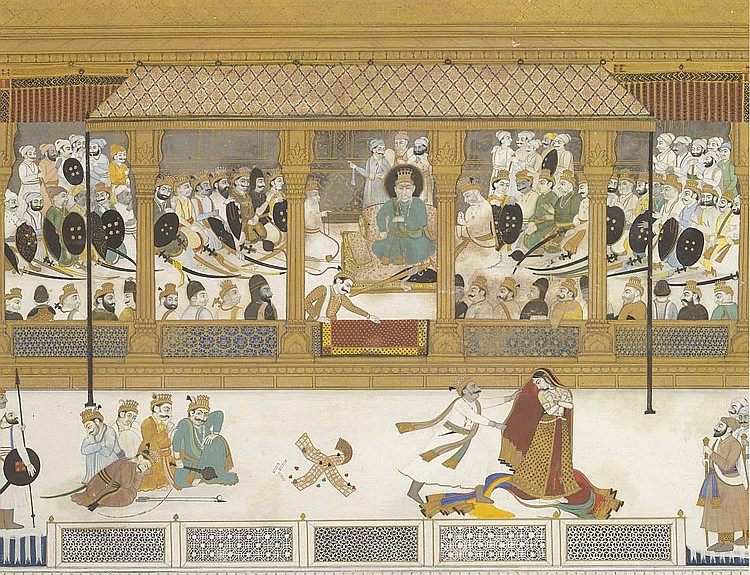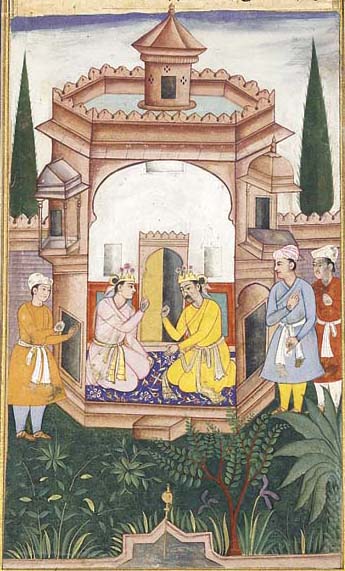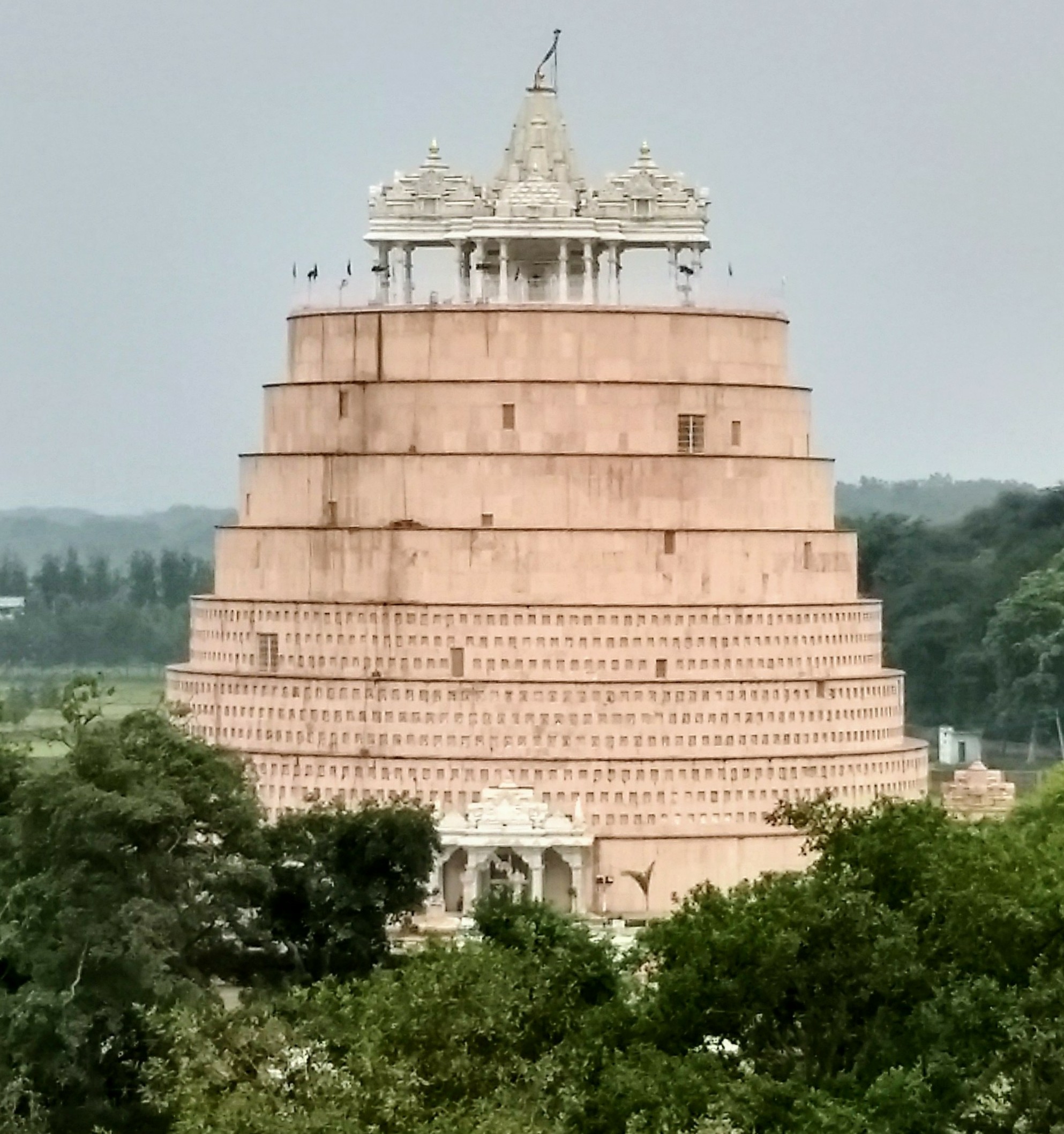|
Chitrāngada
Chitrāngada (, ) was the king of Kuru Mahajanapada with his capital Hastinapura. He belonged to the Lunar Dynasty of Bharata Tribe He was the elder son of Shantanu and Satyavati, who ascended the throne of Hastinapura after his father's death. Legend Following the wishes of queen Satyavati, Bhishma had placed Chitrangada on the throne of the kingdom of the Kurus after Shantanu's departure. Chitrangada was a great warrior and defeated many powerful enemies and Asuras. But soon he developed pride and began disrespecting everyone. Bhishma who tried to correct his young brother's bad behaviour was ignored and rendered powerless on account of his oath to perpetually serve the Kuru King. Finally, the king of the Gandharvas, who was his namesake, came to challenge him saying there could be only one Chitrangada which was himself. A fierce battle took place between the two warriors on the bank of the river Hiranyavati, lasting three years. In the end the king of the Gandhar ... [...More Info...] [...Related Items...] OR: [Wikipedia] [Google] [Baidu] |
Characters In The Mahabharata
The '' Mahabharata'' is one of the two major Sanskrit epics of ancient India composed by Veda Vyasa. At its heart lies the epic struggle between the Pandavas and the Kauravas. The central characters include the five Pandava brothers— Yudhishthira, Bhima, Arjuna, Nakula, and Sahadeva—along with their wife Draupadi. On the opposing side, the hundred Kaurava brothers are led by the elder brother, Duryodhana. However, the ''Mahabharata'' is richly populated with other notable figures including Krishna, Bhishma, Drona, Karna, Kunti, Dushasana, Kripa, Dhritrashtra, Gandhari, Shakuni, Ashwatthama, Balarama, Subhadra, Vyasa, Abhimanyu, Pandu, Satyavati and Amba. The ''Mahabharata'' manuscripts exist in numerous versions, wherein the specifics and details of major characters and episodes vary, often significantly. Except for the sections containing the ''Bhagavad Gita'' which is remarkably consistent between the numerous manuscripts, the rest of the epic exists in ... [...More Info...] [...Related Items...] OR: [Wikipedia] [Google] [Baidu] |
Satyavati
Satyavati (, ; also spelled Satyawati) was the queen of the Kuru Kingdom in the Hindu epic ''Mahabharata''. Satyavati is married to king Shantanu of Hastinapura, and is a great-grandmother of the Pandava and Kaurava princes. She is also the mother of the seer Vyasa, author of the epic. Her story appears in the ''Mahabharata'', the ''Harivamsa,'' and the ''Devi Bhagavata Purana''. Satyavati is the daughter of a fisherman chieftain, Characters in the Mahabharata#Dashraj, Dasharaja and was brought up as a commoner on the banks of the river Yamuna. Another legend says that she is the biological daughter of the Chedi Kingdom, Chedi king Uparichara Vasu (Vasu) and a cursed ''apsara'' (celestial nymph), who was turned into a fish called Adrika. Due to the smell emanating from her body, she was known as ''Matsyagandha'' ("She who smells like fish"), and helped her father, Dasharaja, in his job as ferryman and fisherman. As a young woman, Satyavati met the wandering rishi (sage) Paras ... [...More Info...] [...Related Items...] OR: [Wikipedia] [Google] [Baidu] |
Shantanu
Shantanu (, ) was the King of Kuru Kingdom with his capital at Hastinapura, in the epic ''Mahabharata''. He was a descendant of the Bharata race, a forebear of the lineage of the Chandravamsha, the father of Bhishma and the great-grandfather of the Pandavas and the Kauravas. The ruler was the youngest son of King Pratipa of Hastinapura and had been born during the latter's latter years. His eldest brother, Devapi, had leprosy, and had given up his inheritance to become a hermit. The middle son, Bahlika, (or Vahlika) abandoned his paternal kingdom, and had started living with his maternal uncle in Balkh, subsequently inheriting his kingdom. Shantanu, thus, ascended the throne of Hastinapura. Etymology The meaning of the name can be explained by nirukti available in Adi Parva, through which Sri Nityānanda Miśra elaborates its meaning as "the one who amplifies sukha (happiness) for others". Monier-Williams translates ''śaṁ-tanu'' as "wholesome for the body". The Sa ... [...More Info...] [...Related Items...] OR: [Wikipedia] [Google] [Baidu] |
Vichitravirya
Vichitravirya () is a figure in the Mahabharata, where he is featured as a Kuru king. According to the Hindu epic, he is the youngest son of Queen Satyavati and King Shantanu, and the de jure grandfather of the Pandavas and the Kauravas. He is also the half-brother of Krishna Dvaipayana Vyasa and Bhishma. Literature Mahabharata Vichitravirya has an elder brother named Chitrāngada, whom his half-brother Bhishma placed on the throne of the kingdom of the Kurus after Shantanu's death; he is a mighty warrior, but the king of the Gandharvas defeats and kills him at the end of a long battle. Thereafter, Bhishma consecrates Vichitravirya, who is still a child, as the new king. When he had reached manhood, Bhishma marries him to Ambika and Ambalika, the beautiful daughters of the king of Kashi. Vichitravirya loves his wives very much, and is adored by them. But even after seven years of sexual indulgence, he remains childless and falls ill of tuberculosis, and could not ... [...More Info...] [...Related Items...] OR: [Wikipedia] [Google] [Baidu] |
Bhishma
Bhishma (), also known as Pitamaha, Gangaputra, and Devavrata, is a central figure in the Hindu epic Mahabharata. He was a statesman and military commander of the ancient Kuru Kingdom. Renowned for his wisdom, valor, and unwavering principles, Bhishma served as the supreme commander of the Kaurava forces during the Kurukshetra War. Born to King Shantanu and the river goddess Ganga, he was originally named Devavrata. He was designated the heir-apparent to the throne. However, he renounced his claim and took a vow of lifelong celibacy to facilitate his father's marriage to Satyavati. This unparalleled sacrifice earned him the title Bhishma, meaning "the one who undertakes a severe vow," and he was blessed with ''Ichcha Mrityu''—the boon of choosing his time of death. Bhishma's life after his vow was marked by unwavering loyalty to the Kuru dynasty. He served as the chief advisor and regent to successive rulers of Hastinapura, including his stepbrothers Chitrangada and Vi ... [...More Info...] [...Related Items...] OR: [Wikipedia] [Google] [Baidu] |
Mahabharata
The ''Mahābhārata'' ( ; , , ) is one of the two major Sanskrit Indian epic poetry, epics of ancient India revered as Smriti texts in Hinduism, the other being the ''Ramayana, Rāmāyaṇa''. It narrates the events and aftermath of the Kurukshetra War, a war of succession between two groups of princely cousins, the Kauravas and the Pandava, Pāṇḍavas. It also contains Hindu philosophy, philosophical and devotional material, such as a discussion of the four "goals of life" or ''puruṣārtha'' (12.161). Among the principal works and stories in the ''Mahābhārata'' are the ''Bhagavad Gita'', the story of Damayanti, the story of Shakuntala, the story of Pururava and Urvashi, the story of Savitri and Satyavan, the story of Kacha (sage), Kacha and Devayani, the story of Rishyasringa and an Ramopakhyana, abbreviated version of the ''Rāmāyaṇa'', often considered as works in their own right. Traditionally, the authorship of the ''Mahābhārata'' is attributed to Vyasa, Vy ... [...More Info...] [...Related Items...] OR: [Wikipedia] [Google] [Baidu] |
Lunar Dynasty
The Lunar dynasty (IAST: Candravaṃśa) is a legendary principal house of the Kshatriyas varna, or warrior–ruling varna (Social Class) mentioned in the ancient Indian texts. This legendary dynasty was said to be descended from moon-related deities ('' Soma'' or ''Chandra''). According to the '' Shatapatha Brahmana'', Pururavas was the son of Budha (himself often described as the son of Soma) and the gender-switching deity Ila (born as the daughter of Manu). Pururavas's great-grandson was Yayati, who had five sons named Yadu, Turvasu, Druhyu, Anu, and Puru. These seem to be the names of five Vedic tribes as described in the Vedas. According to the ''Mahabharata'', Lunar dynasty's progenitor Ila ruled from Prayaga, and had a son Shashabindu who ruled in the country of Bahli. The son of Ila and Budha was Pururavas, who became the first Chandravamsha, emperor of all of the earth. Ila's descendants were also known as the Ailas. In Mahabharata In Hindu texts, th ... [...More Info...] [...Related Items...] OR: [Wikipedia] [Google] [Baidu] |
Hastinapur
Hastinapur is a city in the Meerut district in the Indian state of Uttar Pradesh. ''Hastinapura'' is described as the capital of the Kuru Kingdom in Hindu texts such as the ''Mahabharata'' and the Puranas; it is also mentioned in ancient Jain texts. Hastinapur is located on the right bank of the Ganga river. Etymology In Sanskrit, ''Hastinapura'' translates to 'the City of Elephants' from ''Hastina'' (elephant) and ''pura'' (city). Its history dates back to the period of ''Mahabharata''. It is said that the city was named after King Hasti. It is also mentioned in the ''Ramayana'', the 13th and 14th verses of which say (translated): History The early archaeological remains of the region belong to Ochre Coloured Pottery culture which was a Bronze Age culture of Ganga Yamuna doab. Around c.1200 BCE the region transformed to an Iron Age culture. The region was occupied by the Painted Grey Ware culture which corresponds to the Vedic Period. In the ''Mahabharata'', Hastinapur i ... [...More Info...] [...Related Items...] OR: [Wikipedia] [Google] [Baidu] |
Bharatas (tribe)
The Bharatas were an early Vedic that existed in the latter half of the second millennium B.C.E. The earliest mentioned location of the Bharatas was on the Sarasvatī River. Led by the tribal king Divodāsa, the Bharatas moved through the Hindu Kush mountains and defeated Śambara. Divodāsa's descendant, Sudās, won the Battle of the Ten Kings against a Pūru-led coalition, after which the initial compilation of hymns of the R̥gveda was carried out. After the battle, the Bharatas and other Pūru clans eventually formed the Kuru kingdom, which was the first attested state in Indian history. Etymology The name ''Bharata'' is of Indo-Aryan and Indo-Iranian origin, meaning "bearers" or "carriers". History Two Bharatas, Devaśravas Bhārata and Devavāta Bhārata, are mentioned as living near the Āpayā, Sarasvatī and Dr̥ṣadvatī rivers. Devavāta's son, Sṛñjaya Daivavāta, defeated the Turvaśas, and is mentioned alongside Abhyāvartin Cāyamāna who def ... [...More Info...] [...Related Items...] OR: [Wikipedia] [Google] [Baidu] |
Hastinapura
Hastinapur is a city in the Meerut district in the Indian States and territories of India, state of Uttar Pradesh. ''Hastinapura'' is described as the capital of the Kuru Kingdom in Hindu texts such as the ''Mahabharata'' and the Puranas; it is also mentioned in ancient Jain literature, Jain texts. Hastinapur is located on the right bank of the Ganga river. Etymology In Sanskrit, ''Hastinapura'' translates to 'the City of Elephants' from ''Hastina'' (elephant) and ''pura'' (city). Its history dates back to the period of ''Mahabharata''. It is said that the city was named after King Hasti. It is also mentioned in the ''Ramayana'', the 13th and 14th verses of which say (translated): History The early archaeological remains of the region belong to Ochre Coloured Pottery culture which was a Bronze Age culture of Ganga Yamuna doab. Around c.1200 BCE the region transformed to an Iron Age culture. The region was occupied by the Painted Grey Ware culture which corresponds to the Ved ... [...More Info...] [...Related Items...] OR: [Wikipedia] [Google] [Baidu] |





